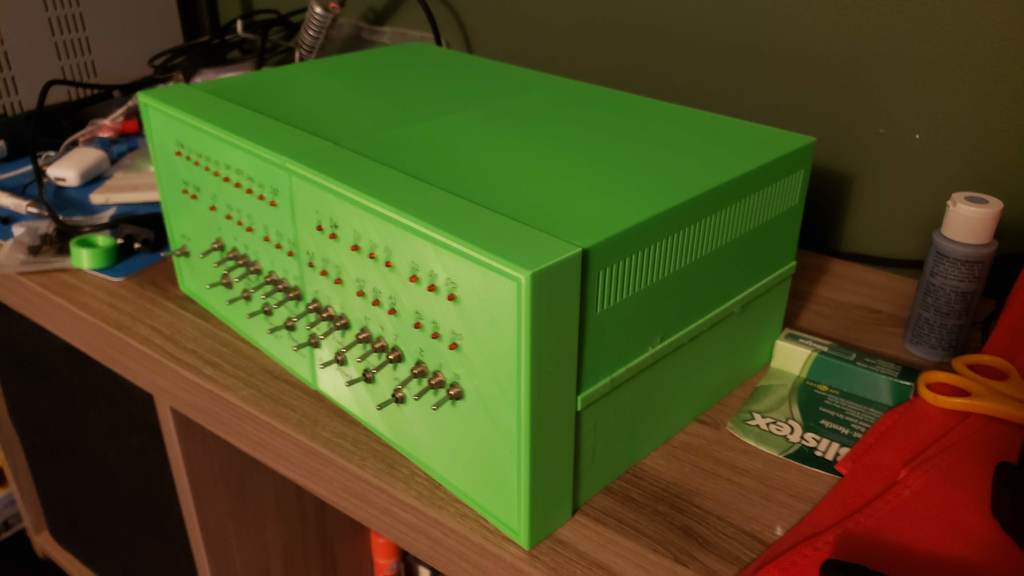
Altair 8800 Simulator Case
thingiverse
Altairduino Simulator Enclosure - Altairduino If you've ever wanted to relive the excitement of the home computer revolution's early days, this project is for you. The Altair 8800 was announced in January 1975's issue of Radio-Electronics, and quickly outsold all expectations. The Altair 8800 influenced Bill Gates' decision to drop out of Harvard and form Microsoft to sell software for the Altair, and Steve Wozniak was a proud owner. The Altair 8800 helped launch the microcomputer revolution, and is considered the first commercially successful personal computer. This project has been in progress for about two years, and it's finally time to upload it here in case anyone else wants to make their own. This is a fully 3D printed enclosure for David Hansel's Arduino Altair 8800 Simulator. You can find the instructions and bill of materials for the electrical side of things [here](https://create.arduino.cc/projecthub/david-hansel/arduino-altair-8800-simulator-3594a6). I've made a few minor changes to my version, which I will detail below. I recommend reading through David Hansel's page and following his instructions otherwise. I designed my Altairduino so that the pieces can be printed in two parts on an Ender 3. To that end, this case is not to the same scale as a real Altair 8800. A real Altair is approximately 445mm x 432mm x 178 mm, this version is about 30% smaller at 340 mm x 220 mm x 140 mm. # Design This design features a removable top panel to give easy access to the inside of the case. It is held on with a set of four 6mm x 3mm magnets. Each component is printed in two pieces and then glued together with tabs. I used CA Glue (super glue) for mine. There's also a printable front panel overlay. You'll need Legal size paper for it. I haven't applied mine yet because I haven't figured out a good way to cut out the 3mm holes for the LEDs. Maybe if you have a laser cutter or a vinyl cutter that would work. Print the front bevels face down with supports as shown in the gallery. The lower case pieces should print with supports, while the upper case pieces can print without them. # Electrical Changes The 3mm LEDs I used draw 1.48 mA when powered by 3.3v through a 1k ohm resistor. So with all 36 LEDs turned on we get a total current draw of 53.28 mA. The Arduino Due that I used can supply up to 130 mA in total, with the individual pins being able to supply either 3 mA or 15 mA. So switching this part of the design should be safe. I've also included a Wemos D1 Mini ESP8266 microcontroller in this build to allow me to operate the Altair over WiFi. For that part of the project I used Ondřej Hruška's ESPTerm firmware. It works quite well. You can find the firmware on Github [here](https://github.com/espterm/espterm-firmware). Be neater than me with the resistors. I got lazy and twisted them all together into bunches and blobbed solder onto them. Don't be like me. Let me know if you end up printing this. I'd love to hear how it goes. I've also included my (very messy) Fusion 360 project if you want to make changes. Go easy on me, it was my first time in Fusion 360. https://www.youtube.com/watch?v=AwXE7rRaQXA&feature=youtu.be https://youtu.be/2bMqbmSILoo
With this file you will be able to print Altair 8800 Simulator Case with your 3D printer. Click on the button and save the file on your computer to work, edit or customize your design. You can also find more 3D designs for printers on Altair 8800 Simulator Case.
